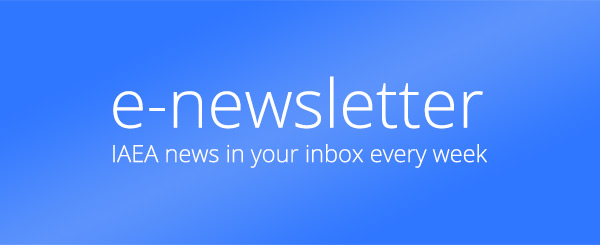The International Atomic Energy Agency (IAEA) today made the following presentation at the third session of the Conference of the Parties to the United Nations Framework Convention on Climate Change in Kyoto:
"With projections of sharply rising energy use and continuing global dependence on fossil sources, environmental pollution and greenhouse gas (GHG) emissions could cause severe damage. The global challenge is to develop strategies that foster a sustainable energy future less dependent on fossil sources.
Nuclear power, with its low environmental impact and huge uranium reserves for fuel, can contribute substantially to meeting the sustainable energy challenge. Nuclear power is a mature, virtually non-GHG emitting technology that already supplies 17% of the world's electricity and avoids the emission of more than 600 million tonnes of carbon (or 2,300 million tonnes of CO2) annually.
However, unless procedures and lead times are universally reduced to less than 6 years (as has been the case for recent installations in Japan, Korea and China), it is an open question whether nuclear power can do more than maintain its present annual avoidance of 8 percent of global carbon dioxide emissions by 2010. But the fact remains it is the only readily and commercially available "no carbon" electricity generating option other than hydropower that makes - and will be able to go on making - a positive contribution of this magnitude for the foreseeable future. It cannot, therefore, be ignored.
Meeting an emission target for the year 2010 must clearly be part of a continuing process. In this context, an accelerated introduction of nuclear power, where feasible, could allow significant GHG-emission reductions for the years and decades after 2020, especially when capacity construction started during the first decade of the 21st century is connected to the electric grid.
While nuclear power is witnessing a rapid expansion in Asia for economic, energy independence and environmental reasons, its expansion has been hampered by public opinion opposed to its use in other parts of the world. Operating safety, final disposal of high level radioactive waste and possible weapons proliferation of fissile materials are often seen as "unresolved issues". These issues, regardless of whether they are perceived or real, need to be addressed if nuclear power is to help meet rising electricity demand and contribute simultaneously to GHG mitigation.
Safety is a dynamic concept continuously evolving as innovation progresses. New reactors are equipped with a pre-stressed concrete containment that would prevent the release of fission products even in the highly unlikely event of a severe accident. The industry is continuously striving to develop advanced reactor designs that make safety less dependent on technology components and human performance but rather based on natural laws of physics. In addition, during the 1990s a global nuclear safety culture has evolved around binding international agreements, codes of practice, agreed standards, international peer reviews and advisory services. Meanwhile, the safety of older generation reactors is being steadily upgraded.
The final disposal of high level radioactive waste is technically feasible but still needs to be demonstrated convincingly to the public. That this has not been done is largely attributable to public scepticism or opposition and lack of the necessary political support. Therefore, presently, high level wastes are being stored above or below ground, awaiting policy decisions on their long-term disposal. Once nuclear wastes are placed in a long-term repository, nuclear will offer benefits from the relatively small volumes of such wastes compared to those of coal which are dispersed in the atmosphere or on the earth's surface.
There is public concern that the use of nuclear power might foster the further spread of nuclear weapons or the acquisition of weapon useable material by subnational groups. However, it is worth recalling that nuclear weapons development consistently preceded - and did not follow from - the introduction of nuclear power reactors. Moreover, in order to ensure that nuclear energy is used exclusively for peaceful purposes, more that 180 states have accepted to subject their nuclear activities to IAEA safeguards. In the aftermath of the Gulf War, the IAEA safeguards system has been strengthened with a view to covering both declared and undeclared activities. The production of viable weapons from spent fuel would require large-scale, technology-intensive efforts as well as the weaponization capability which, while within the potential reach of a handful of Governments, are virtually impossible for terrorists.
In conclusion, if it is fair to assume that numerous countries will meet their increased electricity needs by burning coal, then it is legitimate to compare this with base-load nuclear generating costs which are similar to those of coal in many parts of the world. Hence, GHG mitigation by way of nuclear power may be achievable, at zero or minimum cost, a finding also reported in the IPCC Second Assessment Report. To that extent, nuclear power represents an ideal "least-regret cost" strategy to help combat climate change: if climate degradation predictions prove to be overstated, no economic resources would have been lost by seeking to insure against their coming true. Nuclear power, if chosen, would not have increased the costs of electricity services and would simultaneously, almost as a cost-free by-product, have curtailed if not eliminated many imminent local air quality and regional acidification problems already afflicting a growing number of countries."
The statement was made by Dr. Hans Holger Rogner, Head of Planning and Economic Studies in the IAEA Secretariat's Division of Nuclear Power and the Fuel Cycle.


